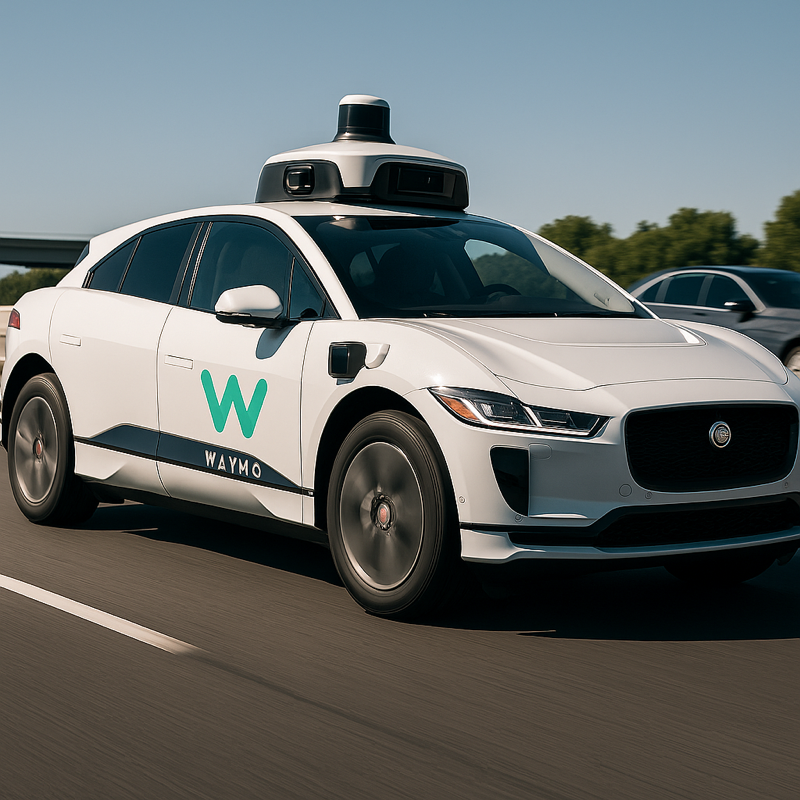Waymo Expands High-Speed Autonomy Across U.S Highways
Waymo steps into a faster chapter. The company powers its autonomous tech into high-speed territory. Robotaxis now run along highways and motorways inside San Francisco, Los Angeles, Phoenix, and new territory: San Jose. The jump transforms rider expectations, route speeds, and competitive pressure across the entire autonomous sector.
The moment arrives fast. The tech grows sharp. Riders sense the change instantly. Trips run faster, straighter, calmer. Waymo’s own internal teams call this step a milestone. The company treats motorway autonomy as proof of technical maturity and commercial confidence. Every queue, every lane merge, every high-speed decision now belongs to Waymo Driver, the engine behind the entire autonomous network.
What’s Happening & Why This Matters
Motorways Change the Rider Experience
Waymo’s autonomous network now handles freeway speeds inside three major metros. The company’s app lets riders signal interest in motorway routes. Waymo’s routing engine then selects high-speed segments when those segments cut travel time in clear, measurable ways. Riders now dodge clogged backroads and arrive faster. That modification creates new habits fast.
Waymo executives frame this step as proof of technical stability. Dmitri Dolgov, co-CEO, says, “Achieving fully autonomous freeway operations is a profound engineering feat — easy to conceive, yet hard to truly master.”
Waymo’s team runs internal freeway tests for more than a year. Employees ride inside evaluation vehicles. Guests ride inside controlled trials. Waymo Driver trains with “millions of autonomous miles”, simulation runs, and closed-course trials. All of it feeds current motorway behavior.
Reaching San Jose
Waymo’s network now boasts San Jose with curb access at Mineta San Jose International Airport. This creates direct, autonomous access for workers inside major tech centers. Apple, Google, Nvidia, and IBM maintain large offices across the area. Workers now summon a robotaxi from terminals and ride into the valley without the friction of shuttles, taxis, or ride-share unpredictability.
Waymo also runs monitored tests at San Francisco International Airport, adding new pressure on traditional ground-transport vendors.

Waymo Stands Alone
Waymo is the only U.S. operator with a fully paid robotaxi network without human monitors. Tesla runs small supervised fleets inside Austin and San Francisco. Zoox runs limited promotional ride loops in Las Vegas.
Waymo owns a fleet of more than 1,500 autonomous vehicles across multiple cities. That scale increases with motorway clearance. Every mile strengthens internal datasets, bolsters behavior models, and tightens autonomy on all road types.
Motorways Create New Engineering Demands
Motorways strip away pedestrians, random left turns, sudden alley traffic, and clutter. They add speed, sharper merging logic, and rapid directional decisions. Errors carry consequences. Waymo engineers create new motorway safety protocols with highway patrol agencies. These protocols govern merge logic, exit decisions, speed targets, and risk scoring.
Waymo Driver reads lanes, merging arcs, tailgater activities, surrounding vehicle drift, and roadside signals without the crutch of human monitors. The engine responds instantly with consistent patterns. The network is more predictable, safer, smoother, and easier to trust.
TF Summary: What’s Next
Waymo enters its motorway chapter with momentum, confidence, and clear separation over its rivals. Robotaxis gain speed. Cities gain coverage. Riders gain reliability. Workers across the Bay Area rely on Waymo in the daily transport layer, not a novelty. Tesla and Zoox attempt catch-ups, but Waymo’s data advantage stretches into every lane.
MY FORECAST: Waymo’s motorway expansion floods the sector with tension. Tesla escalates its own road strategy, Zoox rushes new trials, and regulators press for deeper analysis. Riders adopt motorway robotaxis at scale. Traffic habits evolve. Commutes shift into autonomous norms. All eyes are on Waymo from every city with congestion, innovation pressure, or transit gaps.
— Text-to-Speech (TTS) provided by gspeech


